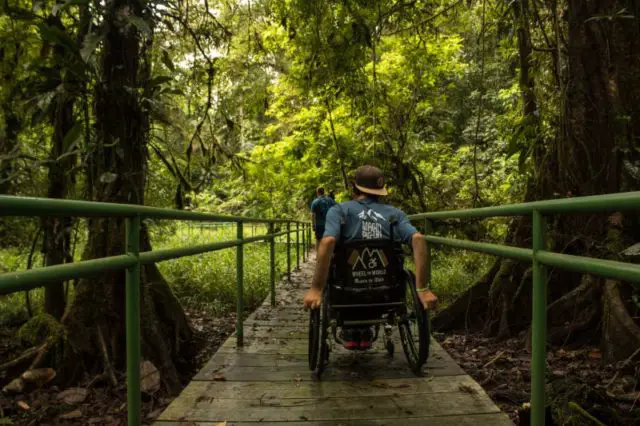
When we talk about tourism, we think about attracting people from other countries, we generate campaigns where we show all the biodiversity that is in Costa Rica and show people the nature paths along the beaches or mountain trails but have you ever seen an advertisement about tourism that includes people with disabilities?
According to the 2018 National Survey on Disability, in Costa Rica, there are 670,640 people over the age of 18 with disabilities and it is estimated that counting minors with disabilities, their families, and personal assistants, could reach or even exceed 1,000,000 of persons.
Based on this data, human rights, and the economic crisis that the country is currently experiencing, we could say that Costa Rica should bet on inclusive, accessible, and universal tourism.
In Costa Rica, although we have some National Parks and hotels with accessibility, there are still places of tourism in mountains and beaches where a person with a disability cannot go to visit.
The Costa Rican Accessible Tourism Network is a Non-Governmental Organization that promotes tourism with that approach of inclusion, accessibility, and universal design, but also has the vision of sustainable tourism and a circular economy. A very interesting proposal that has been echoing mainly in the Local Governments of the coastal areas.
An example of this is the canton of Garabito, which already has retractable walkways made with reused plastic on its beach in Jacó, so that people with disabilities who use technical aids such as wheelchairs, canes, crutches, etc., can enter the sea without any problems. This has generated that many people with disabilities visit this beach and even that the National Adapted Surf Team can train in this place, thus generating an increase in tourism and therefore in the local tourism economy.
The tourism sector must first break with the paradigm that an accessible tourist place is “an expense” because it is not, it is an investment that in the medium and long term will generate an increase in their income. For example, a person with a disability can go sightseeing and when he does, he doesn’t go alone, but usually goes with 1, 2, 3, or more people.
Thinking of inclusion
Now, let’s plan for these more than 670 thousand people with disabilities of legal age to do tourism accompanied, isn’t that an increase in the economy? Or, let’s look at it from the main focus, the human rights focus, how many of you have gone to a mountain or beach? How many tourist places do you have memories of? Many, right?
Well, imagine that many of the beautiful places that you have visited people with disability have not had the pleasure of knowing them because they are not accessible, so they have been deprived of their right to leisure, recreation, and even free transit. Which is enshrined in our Political Constitution, is that fair? No right? Well, that is the reality of many people with disabilities.
As much as we have the economic means to visit tourist places, many are not designed for the enjoyment of all people, but a few. For this reason, tourism (for people with disabilities) advertising, does not exist, and if we do not have people with disabilities in our imagination from the planning of campaigns or the creation of tourist places we can’t think about the growth of tourism.
It is important and necessary that before thinking about attracting foreign tourism, we think about attracting local tourism, and only from the perspective of Human Rights, inclusion, and universal design, we are going to start to lift the economy of the country.
Now, how do we do it?
The first and most important thing is to include people with disabilities from the planning point: those who, can contribute to generating tourism that truly meets the needs of all people and that has that true focus of inclusion and Human rights.
On the other hand, in Costa Rica, there is a law that exempts the payment of taxes to acquire a vehicle that transports a person with a disability (Law No. 7293), but said law is very specific in that the ve hicle is only to be driven by the person with a disability or two people duly designated and authorized to transport that person with a disability, but for example, people who work with tourist vans and who wish to use their vans to transport tourists with disabilities, do not have access to this exemption or any type of incentive, so why not think about creating legal mechanisms to encourage this sector of tourist transport to bet on accessible tourism?
Or, the ICT could generate investment in accessible tourism through International Cooperation. And these are just two of the many initiatives that could be generated and that I am sure will be highly successful to reactivate the country’s economy and to achieve true inclusion in tourism.

